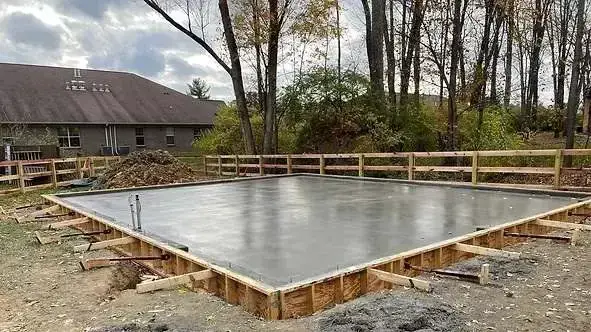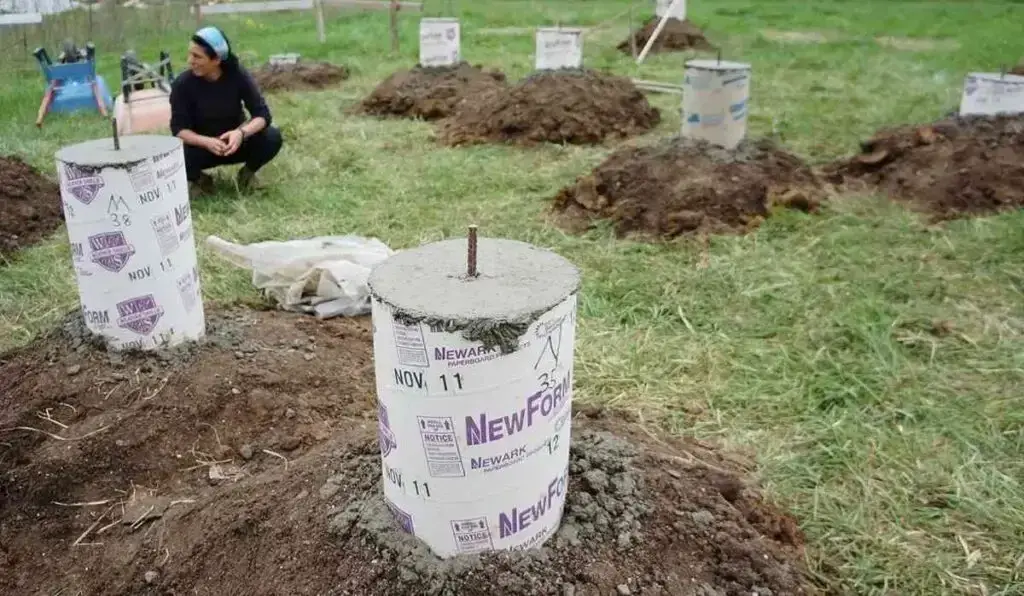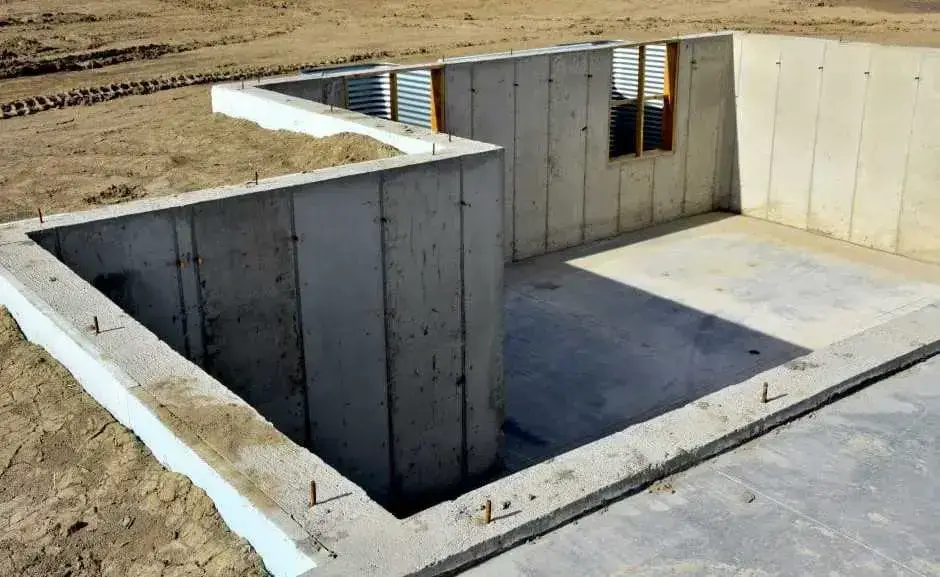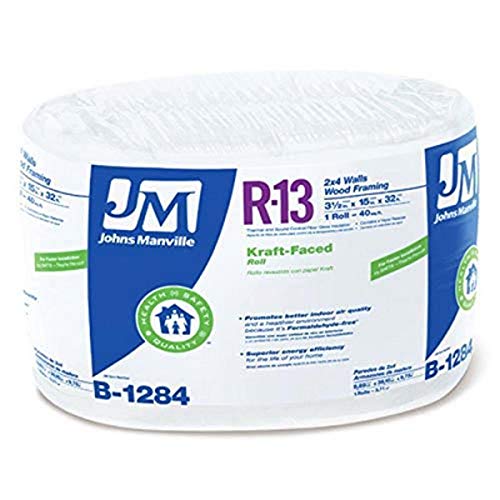Curious minds want to know: Do shipping container homes need a foundation? I’m here to unveil the secrets of container living and make you discover the key to a solid start for your dream home! Discover the Importance of a solid foundation for stability and structural integrity in shipping container homes.
Shipping container homes have gained immense popularity in recent years due to their affordability, versatility, and eco-friendly nature.
These unique living spaces are constructed using repurposed shipping containers, transforming them into stylish and functional dwellings.
However, whether you’re planning to build a single container home or incorporate multiple containers into a larger structure, one key question emerges: Does a shipping container home need a foundation?
The answer is a resounding yes! While it may be tempting to overlook the importance of a foundation, a solid base is vital for ensuring stability and maintaining the structural integrity of your shipping container home.
Table of Contents
Types of Foundation for Shipping Container Homes
A. Concrete Slabs

Concrete slabs provide a sturdy base for shipping container homes. These foundations consist of a thick, flat piece of concrete that is poured directly onto the ground. The weight of the container home is evenly distributed across the entire slab, ensuring stability and preventing any shifting or settling.
Benefits of using concrete slabs as a foundation:
- Strong and durable, able to support heavy loads
- Provides a level surface for the container home
- Helps to prevent moisture build-up by keeping the container off the ground
Drawbacks of using concrete slabs as a foundation:
- Requires extensive site preparation and excavation
- May be more expensive compared to other foundation options
- Limited flexibility in terms of relocating the container home
Read More on An Excellent Guide for Shipping Container Home Foundation
B. Pier Foundations

Without a doubt, pier foundations are another popular choice for shipping container homes. These foundations use a series of vertical columns, called piers, to distribute the weight of the container evenly.
The piers are typically made of concrete or steel and are spaced strategically to provide support at key points along the container’s structure.
Advantages of using pier foundations for shipping container homes:
- Allows for better airflow and ventilation under the container, reducing the risk of moisture damage
- Offers the flexibility to adjust the height of the container home
- Provides a cost-effective alternative to concrete slabs
Disadvantages of using pier foundations for shipping container homes:
- Requires additional engineering and planning to ensure proper weight distribution
- May need more maintenance due to potential settling or shifting of the piers
- Raises the container home off the ground, which could impact accessibility
Read More on Shipping Container Home Foundation Ideas: Ultimate Guide
C. Crawl Spaces

Crawl spaces are an alternative foundation option for shipping container homes that provide additional storage space and accessibility to utilities. This type of foundation elevates the container slightly off the ground, creating a crawl space underneath.
Pros of choosing crawl spaces for shipping container homes:
- Allows for easy access to utilities such as wiring and plumbing
- Provides additional storage space for equipment, tools, or seasonal items
- Offers insulation benefits by creating an air gap between the container and the ground
Cons of choosing crawl spaces for shipping container homes:
- Requires proper ventilation to prevent moisture accumulation
- May increase construction costs due to additional materials and labor for creating the crawl space
- Can potentially attract pests or rodents if not properly sealed
Read More on Shipping Container Basement: How To Burry A Container
D. Basements

Basements can provide an additional level of living space and storage for shipping container homes. This foundation choice involves excavating the ground to create a below-ground level that the container home sits on.
Benefits of having a basement in a shipping container home:
- Offers extra living space, allowing for more flexibility in room arrangements
- Provides storage for seasonal items or larger equipment
- Creates a stable and secure foundation due to being below ground level
Considerations when choosing a basement for a shipping container home:
- Requires additional construction time and cost due to excavation and structural reinforcement
- Requires proper waterproofing and insulation to prevent moisture and temperature issues
- May have specific building code requirements and regulations to adhere to
Read More on The Container Store Raleigh, North Carolina: Home Organization
Stability and Structural Considerations
When it comes to building shipping container homes, stability and structural considerations play a crucial role. The foundation support is of utmost importance in ensuring the overall stability of these unique dwellings.
Let’s explore why foundation support is essential and how it contributes to the structural integrity of shipping container homes.
Importance of Foundation Support for Stability
The foundation provides a robust base for the entire structure, helping to distribute the weight evenly and prevent any potential instability.
Without a solid foundation, shipping container homes may be vulnerable to shifting, settling, or even collapsing over time. Therefore, investing in a reliable foundation is a crucial step to ensure long-term stability.
Distribution of Weight and Prevention of Leaning or Settling
Shipping container homes are constructed by stacking multiple containers on top of each other, which can result in a significant amount of weight.
A properly designed and constructed foundation helps distribute this weight throughout the structure, preventing any leaning or settling. Additionally, it ensures that the load-bearing capacity of the soil is not exceeded, reducing the risk of structural damages.
With a solid foundation, shipping container homes can withstand external forces such as strong winds, earthquakes, or even heavy snow loads. The foundation acts as the first line of defense, providing stability and structural integrity.
| Image | Product Title | Features | Price |
|---|---|---|---|
 | Check on Amazon | ||
 | Check on Amazon | ||
 | Check on Amazon |
Read More on Container Home Builders Maryland – Innovative Skills
Building Codes and Regulations
When it comes to building shipping container homes, it is essential to understand the building codes and regulations that apply to your specific location. Each region has its own set of requirements, and ensuring compliance is crucial for both safety and legal reasons.
A. Overview of location-dependent building codes and regulations:
Before embarking on your shipping container home project, it is vital to research and understand the building codes and regulations that are applicable to your area.
Building codes can vary significantly from one region to another, and it’s essential to comply with these guidelines to avoid any legal issues or delays in the construction process.
B. Compliance for ensuring safety and legal requirements:
Complying with building codes and regulations is not only a legal requirement but also essential for the safety and structural integrity of your shipping container home.
These guidelines are put in place to ensure that buildings meet certain standards and can withstand various environmental factors such as wind, earthquakes, and snow loads.
By adhering to these regulations, you can rest assured that your shipping container home will be safe for occupancy and that you won’t encounter any issues when obtaining necessary permits for your construction.
Read More on Are Container Homes Legal in Maryland? Professional Review
Site Conditions and Soil Analysis
A crucial step in determining the suitable foundation for shipping container homes is assessing the site conditions. Before making any decisions, it is important to thoroughly evaluate the land where the home will be constructed.
A. Assessing Site Conditions Before Determining Foundation Type
When considering a shipping container home, it is essential to assess the site conditions. Factors such as topography, climate, and proximity to water sources can significantly impact the choice of foundation.
For instance, if the land is located in an area prone to flooding, a raised foundation may be more appropriate to mitigate potential damage. On the other hand, if the site has uneven terrain, extensive leveling might be necessary before foundation construction can begin.
B. Conducting Soil Analysis to Identify Potential Challenges
Soil analysis is a critical step in determining the suitability of a site for a shipping container home and selecting the appropriate foundation. Conducting a thorough soil analysis can help identify potential challenges and prevent future structural issues.
Soil composition, stability, and load-bearing capacity are essential factors to consider during the analysis. Different soil types, such as clay, sand, or gravel, possess varying characteristics that affect foundation performance.
C. Impact of Soil Quality on Foundation Choice
The quality of soil plays a significant role in foundation selection for shipping container homes. A soil with poor drainage or low load-bearing capacity may require specific foundation designs or soil stabilization techniques.
For example, expansive clay soil can cause significant movement and foundation settlement. In such cases, deep foundations, such as piles or piers, may be necessary to provide the required stability and prevent structural damage.
- Understanding the soil conditions can guide the choice between shallow and deep foundations.
- Soil engineering experts can provide valuable insights into foundation design based on the soil analysis results.
- Geotechnical reports should be consulted to gain a comprehensive understanding of the soil conditions and any potential challenges.
Considering the impact of soil quality on the foundation choice is crucial to ensure the long-term stability and integrity of the shipping container home.
Read More on Are Container Homes Legal In India? Find Out The Facts
Cost Implications
The type of foundation chosen for a shipping container home can have a significant impact on the overall project cost. Several factors influence the cost implications, including the materials used, labor required, and site preparation.
Influence of Foundation Type on Overall Project Cost
The choice of foundation type can greatly affect the total cost of constructing a shipping container home. Options such as concrete slab, pier, and beam, or crawl space vary in terms of complexity and materials needed.
Concrete slab: A concrete slab foundation is a popular choice for shipping container homes due to its durability and stability. While it may require more excavation and concrete material, it offers a solid and low-maintenance foundation. However, the cost of concrete and professional labor can increase overall project expenses.
Pier and beam: A pier and beam foundation involves constructing a series of piers or stilts to support the weight of the home. This foundation type requires less concrete but may involve additional labor and material costs for creating the piers. However, it provides flexibility in adjusting the height and level of the home.
Crawl space: A crawl space foundation is similar to the pier and beam, but with added space below the home for easier access to plumbing and electrical systems. While it offers convenience, it requires additional materials, such as ventilation systems and insulation. This can lead to higher costs compared to other foundation options.
Read More on Container Home Builders In Wisconsin – Affordable, Eco-friendly
Factors Affecting Costs, Including Materials, Labor, and Site Preparation
Aside from the foundation type, several other factors can impact the cost of shipping container home construction. These include:
- Materials: The quality and cost of the materials used for the foundation, such as concrete, steel, or wood, can greatly affect the overall expenses.
- Labor: Hiring skilled professionals for foundation construction is vital to ensure stability and safety. Labor costs can vary depending on the complexity and duration of the project.
- Site preparation: The condition of the site and the amount of preparatory work required, such as soil grading or excavation, can influence the overall cost of the project.
To get an accurate estimate for the cost implications of your shipping container home foundation, it is essential to consult with experienced contractors or architects who specialize in this type of construction.
Insulation and Moisture Control
When it comes to shipping container homes, individuals often wonder about the need for a foundation. However, one crucial aspect that should not be overlooked is insulation and moisture control. Incorporating these measures into the foundation ensures optimal comfort and protection for your home.
A. Incorporating insulation and moisture control measures in the foundation
Insulation is vital for regulating the temperature inside your shipping container home. By incorporating insulation within the foundation, you can prevent heat loss/gain and maintain a comfortable indoor environment throughout the year. Additionally, moisture control is essential for safeguarding your home against dampness and mold-related issues.
B. Prevention of heat loss/gain, humidity control, and protection against moisture-related issues
- To prevent heat loss or gain, insulation can be added to the foundation walls and beneath the flooring. This will help in maintaining a stable internal temperature and reducing the need for excessive heating or cooling.
- Humidity control is another crucial aspect to consider. By incorporating moisture barriers and ventilation systems within the foundation, you can effectively manage the humidity levels inside your shipping container home.
- Protection against moisture-related issues such as water penetration and condensation can be achieved by utilizing waterproof membranes, sealants, and drainage systems. These measures will ensure that your home remains dry and free from moisture-related damage.
Overall, insulation and moisture control measures play a vital role in the foundation of shipping container homes. By addressing these factors, you can create a comfortable and protected living environment for yourself and your loved ones.
| Image | Product Title | Features | Price |
|---|---|---|---|
 | Buy on Amazon | ||
 | Buy on Amazon | ||
 | Buy on Amazon |
Read More on Container Homes In Central Florida: Affordable And Sustainable
Alternative Foundation Methods
A. Introduction to Alternative Methods for Shipping Container Homes
While traditional foundation methods like concrete slabs or crawl spaces are commonly used for shipping container homes, alternative options are available that offer flexibility and efficiency.
These alternatives are often suitable for various site conditions and can be tailored to meet design preferences.
B. Helical Piers, Screw Piles, and Elevated Platforms as Options
One alternative method for shipping container homes is the use of helical piers or screw piles. These are deep foundation systems that utilize advanced engineering principles to provide stability and load-bearing capabilities. Helical piers are twisted into the ground, creating a strong support system for the container structure.
Another option is the use of elevated platforms, which offer several benefits for container homes. By raising the containers off the ground, these platforms provide protection against moisture, flooding, and pests. They also allow for better airflow and insulation, enhancing the overall energy efficiency of the home.
C. Consideration of Site-specific Requirements and Design Preferences
When considering alternative foundation methods for shipping container homes, it is crucial to take into account site-specific requirements and design preferences.
Factors such as soil conditions, climate, and local building codes should all be carefully analyzed to determine the most suitable foundation option.
Furthermore, the desired aesthetics and functional requirements of the home should also be considered to ensure the chosen alternative method aligns with the overall design concept.
Read More on Florida Container Ports – Colossal Source of Used Containers
Maintenance and Longevity
A well-built foundation is crucial for the longevity of shipping container homes. It not only provides stability but also protects the structure from various environmental factors. Here’s why a solid foundation is essential:
- Structural Integrity: A strong foundation ensures that the container home remains structurally sound, even in harsh weather conditions. It prevents shifting, settling, or tilting, which can lead to structural damage over time.
- Moisture Control: Adequate insulation and moisture control are vital for container homes. A well-built foundation helps in preventing moisture from seeping into the structure, protecting it from potential rot and mold.
- Pest Prevention: A properly constructed foundation acts as a barrier against pests, keeping them from entering the living space and causing damage. It adds an extra layer of protection to your container home.
- Regular Maintenance: Routine maintenance and inspections are essential to ensure the longevity of your shipping container home. Regularly check for any signs of foundation issues such as cracks, settling, or moisture build-up, and address them promptly to avoid further damage.
By investing in a well-designed and durable foundation, you can extend the lifespan of your shipping container home and enjoy a stable and comfortable living space for years to come.
Read More on The Truth About Shipping Container Homes In North Carolina
Professional Expertise
When it comes to building shipping container homes, seeking professional expertise is crucial for a successful project. Whether it’s selecting the appropriate foundation or ensuring proper construction, the involvement of structural engineers, architects, and experienced contractors is essential.
These professionals play a significant role in the construction process. Structural engineers can evaluate the stability of the chosen foundation and provide valuable insights to make the home structurally sound. They have the expertise to calculate loads and stresses to ensure the foundation can handle the weight of the shipping containers.
Architects, on the other hand, bring their design expertise to the table. They can create innovative plans that meet your specific needs while adhering to local building codes and regulations. Their knowledge of spatial planning and architectural aesthetics ensures a well-designed shipping container home.
Experienced contractors are also key players in the construction of shipping container homes. They have hands-on experience in working with shipping containers and are familiar with the challenges that may arise during the construction process. Their expertise can help streamline the construction, ensuring a seamless execution.
In addition to these professionals, it is crucial to consult specialists who specialize in foundation selection and construction. These specialists have in-depth knowledge about different foundation types and can guide you in selecting the most suitable option based on your site conditions and local regulations.
Consulting professionals and specialists not only ensures the selection of a suitable foundation for your shipping container home but also helps in avoiding costly mistakes and potential structural issues in the long run.
Read More on Environmental Impact Of Solar Energy
Environmental Impact
When considering the foundation for shipping container homes, it is essential to understand the environmental implications of your choices. The foundation you choose can have a significant impact on the environment and contribute to carbon emissions.
One of the primary considerations is the carbon footprint associated with different foundation types. Traditional foundation methods often require extensive excavation and the use of materials that contribute to carbon emissions during their production.
However, there are sustainable and eco-friendly options available for conscious homeowners. For example, using recycled or reclaimed materials for the foundation can minimize the environmental impact.
Additionally, utilizing innovative foundation systems that require fewer resources and minimize excavation can significantly reduce the ecological footprint.
Read More on Can You Put A Shipping Container On Agricultural Land?
Conclusion
Foundations play a crucial role in the stability and longevity of shipping container homes. As we have discussed throughout this guide, various factors must be considered when selecting the right foundation for your specific project.
First and foremost, it is essential to understand the importance of a solid foundation when building a shipping container home. The foundation provides the necessary support and stability to ensure the structural integrity of the entire structure.
Furthermore, building codes and regulations should be taken into account to ensure compliance with safety standards. Additionally, site conditions and soil analysis are vital considerations to determine the suitable foundation type for your location.
Cost implications should also be evaluated, as different foundation methods may vary in terms of expenses. Insulation and moisture control should not be overlooked, as they contribute to the overall comfort and energy efficiency of the home.
While traditional foundation methods are commonly used, alternative options such as piers, helical piles, or container footings offer flexibility and cost-effectiveness. It is essential to consult with professionals who possess expertise in building shipping container homes to guide you through the process.
Lastly, it is crucial to acknowledge the environmental impact of your foundation choice. By selecting eco-friendly materials and methods, you can reduce the carbon footprint of your shipping container home.
In conclusion, the foundation of a shipping container home is a significant consideration that should not be overlooked. By recognizing the importance of a solid foundation, considering various factors, and seeking professional advice, you can ensure the success and durability of your shipping container home project.
Read More on Container Home Builders Tampa Florida: Here Are The Best

